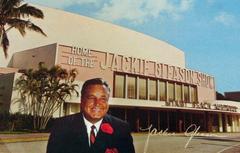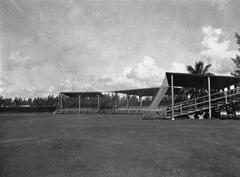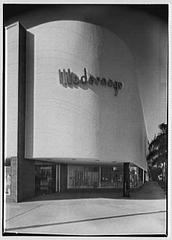Miami Beach Visiting Guide: Hours, Tickets, Attractions, and Travel Tips
Date: 04/07/2025
Introduction to Miami Beach: History, Significance, and What to Expect
Miami Beach, located on Florida’s southeastern coast, stands as an iconic destination celebrated for its stunning beaches, world-renowned Art Deco architecture, and dynamic multicultural scene. From its earliest days as indigenous land inhabited by the Tequesta people, through waves of immigration and periods of visionary development, Miami Beach has evolved into a cosmopolitan hub that offers both leisure and a deep sense of history. Whether you’re marveling at pastel-hued buildings in the Art Deco Historic District, honoring history at the solemn Holocaust Memorial, or exploring vibrant neighborhoods like South Beach, this comprehensive guide will provide essential information on visiting hours, ticketing, major attractions, and practical travel tips to ensure your trip is both memorable and seamless.
Once a mangrove swamp, Miami Beach transformed into a luxury resort city thanks to developers like John S. Collins and Carl Fisher in the early 20th century (Britannica, Miami Beach Visitor Center). Today, it is famous for its preserved Art Deco buildings, diverse communities shaped by waves of immigration—especially Cuban and other Latin American populations—and a thriving arts and cultural scene (Nomadic Matt, Miami Wire, DW). With family-friendly attractions, accessible public spaces, and an exciting event calendar, Miami Beach is a top choice for travelers seeking both relaxation and enrichment.
Table of Contents
- History and Cultural Evolution
- Top Attractions and Landmarks (with Visiting Hours & Ticket Info)
- Travel Tips, Accessibility, Transportation
- Frequently Asked Questions (FAQs)
- Conclusion & Call to Action
- Sources
History and Cultural Evolution
Indigenous and Colonial Era
Long before Miami Beach became a global hotspot, the area was home to the Tequesta people, who relied on the region’s abundant waterways for survival (Britannica). Spanish explorers arrived in the 16th century, but colonization attempts were largely unsuccessful, and indigenous populations suffered greatly from disease and displacement (Miami Beach Visitor Center).
19th Century Settlement
Throughout the 19th century, the area remained largely undeveloped, characterized by mangroves and occasional Seminole presence. Early land purchases for coconut farming proved unprofitable, but the potential for real estate and agriculture began to attract visionaries like John S. Collins (UMich Timeline).
Early 20th Century Development
Miami Beach’s transformation accelerated in the early 1900s with the construction of a bridge connecting the island to mainland Miami. Developers like Collins, Carl Fisher, and the Lummus brothers envisioned a luxury resort city, laying infrastructure that would earn Miami Beach the nickname “Billion Dollar Sandbar” (Miami Beach Visitor Center).
The Art Deco Boom
The 1920s and 1930s saw Miami Beach flourish, with the emergence of “Millionaire’s Row” and luxury hotels. The Art Deco era transformed South Beach, as pastel-hued, geometric buildings, designed between 1923 and 1943, redefined the cityscape (Britannica, Nomadic Matt). Despite setbacks like the 1926 hurricane, the city’s architectural legacy remains one of its greatest draws.
WWII and Postwar Growth
During World War II, Miami Beach served as a major military training center. The influx of servicemen who chose to settle postwar fueled population growth, and the city further developed its resort and cultural offerings. The Jewish community grew, establishing significant landmarks like the Holocaust Memorial and the Jewish Museum of Florida (Britannica).
Immigration and Diversity
Miami Beach’s cultural landscape was reshaped after the Cuban Revolution, as waves of Cuban exiles and immigrants from across the Caribbean and Latin America arrived (Miami Beach Visitor Center). Today, over half the population is foreign-born, contributing to a vibrant, multicultural identity reflected in the city’s cuisine, music, and festivals.
Urban Renewal and Modern Identity
The late 20th century brought urban revitalization, particularly in South Beach, where efforts to preserve Art Deco architecture coincided with a resurgence in nightlife, the arts, and tourism (Miami Beach Visitor Center, DW). Miami Beach’s role as a global hub is now cemented by international events like Art Basel Miami Beach and a thriving hospitality industry.
Top Attractions and Landmarks
Art Deco Historic District
Overview:
Miami Beach’s Art Deco Historic District boasts the world’s largest concentration of Art Deco architecture, with over 800 pastel-colored buildings from the 1920s–1940s (Time Out Miami). The district is a living museum, stretching along Ocean Drive, Collins Avenue, and Washington Avenue.
Visiting Hours & Tickets:
- Outdoor district: Always open.
- Guided walking tours: Operate daily, 9 AM–5 PM, $25–$50 per person (Visit Florida). Tours are generally wheelchair accessible.
Tips:
- Best explored by foot or bike.
- Look for the Miami Design Preservation League for in-depth guided experiences.
South Beach & Ocean Drive
Overview:
South Beach (SoBe) is the heart of Miami Beach’s lifestyle, famous for its white sand, turquoise water, and vibrant people-watching (The Broke Backpacker). Ocean Drive, lined with neon-lit Art Deco hotels and palm trees, is the center of nightlife and special events (Miami and Beaches).
Hours:
- Public beach: 24/7
- Ocean Drive: Best enjoyed day and night
Accessibility:
- Multiple wheelchair-accessible beach entrances; beach wheelchairs available at select locations.
Holocaust Memorial Miami Beach
Overview:
A profound tribute to the six million Jews who perished in the Holocaust, the memorial features a dramatic 40-foot bronze sculpture and contemplative gardens (Holocaust Memorial Miami Beach).
Visiting Hours & Tickets:
- Open daily, 9 AM–5 PM (closed on major Jewish holidays)
- Free admission; donations welcome for upkeep and education
Guided Tours:
- Available via the foundation; schools and groups can arrange educational sessions in advance.
Accessibility:
- Fully wheelchair accessible
Jewish Museum of Florida
Overview:
This museum celebrates the Jewish experience in Florida, housed in two restored historic synagogues (Britannica).
Hours & Tickets:
- Tuesday–Sunday, 11 AM–5 PM
- $10 adults, discounts available
Accessibility:
- Wheelchair accessible
The Bass Museum of Art
Overview:
Miami Beach’s contemporary art museum, located in an Art Deco building, features international exhibitions and educational programs (Time Out Miami).
Hours & Tickets:
- Tuesday–Sunday, 11 AM–5 PM; closed Mondays
- $15 adults, free for children under 12
Accessibility:
- Fully wheelchair accessible
Lincoln Road
Overview:
A pedestrian-friendly promenade with boutiques, art galleries, and eateries, designed by Morris Lapidus (The Broke Backpacker).
Hours:
- Shops/restaurants: Generally 10 AM–10 PM
South Pointe Park
Overview:
At the southern tip of Miami Beach, this park offers ocean views, walking and biking paths, a fishing pier, and family-friendly facilities (Visit Florida).
Hours:
- Daily, 6 AM–11 PM
- Wheelchair accessible
Travel Tips, Accessibility, and Transportation
- Best Time to Visit: November to April for pleasant weather and major events like Art Basel.
- Weather: Year-round warmth; July is hottest and most humid. Pack lightweight clothing and sun protection (AnyTravelTips).
- Crowds: South Beach is busiest near Ocean Drive; quieter north of 23rd Street and in late afternoon.
- Getting Around: Miami Beach is highly walkable. Bike rentals, public buses, and ride-sharing services are readily available.
- Parking: Public garages and metered lots available; Ocean Drive has limited parking, especially on weekends and during events.
- Accessibility: Most beaches, parks, and cultural sites offer wheelchair access. Beach wheelchairs are provided at select points.
- Safety: Remain aware of your belongings and surroundings, especially in crowded or late-night settings (The Broke Backpacker).
- Dress Code: Lightweight attire recommended; bring a light sweater for indoor venues.
Frequently Asked Questions (FAQs)
Q: What are the visiting hours for Miami Beach’s main attractions?
A: Outdoor sites like the Art Deco District and beaches are always open. Museums and memorials typically open 9–11 AM and close by 5–6 PM.
Q: Are tickets required for tours and museums?
A: Entry to outdoor districts is free; museums and guided tours require tickets, which can be purchased online or on-site.
Q: Is Miami Beach accessible for visitors with disabilities?
A: Yes, most attractions, public spaces, and beaches provide wheelchair access. The EXP Miami Beach Tours App offers accessibility guides.
Q: When is the best time to visit Miami Beach?
A: November to April for mild weather and cultural events; July is less crowded and more affordable, but hotter.
Q: How can I get around Miami Beach?
A: Walking, biking, public buses, and ride-sharing are convenient options; parking is available but limited in high-traffic areas.
Conclusion & Call to Action
Miami Beach offers an unparalleled blend of historical depth, architectural beauty, and vibrant cultural life. Whether you’re exploring the Art Deco Historic District, relaxing on South Beach, or immersing yourself in the city’s museums and festivals, careful planning—checking visiting hours, securing tickets, and considering accessibility—will enhance your experience.
Ready to explore Miami Beach?
Download the Audiala app for curated walking tours, accessibility guides, and up-to-date event info. Discover related articles on Miami dining, nightlife, and family-friendly activities to make the most of your stay. Follow us on social media for the latest travel inspiration and insider tips!
Sources and Further Reading
- Britannica – Miami Beach
- Miami Beach Visitor Center – History of Miami Beach
- Miami Wire – The History of Miami Beach from Swampland to Tourist Paradise
- DW – More Than Just Parties: Exploring Miami Beach’s Cultural Side
- Nomadic Matt – Art Deco Historic District
- Holocaust Memorial Miami Beach
- The Bentley Hotel – Ocean Drive and the History of South Beach
- Time Out Miami – Best Things to Do in Miami Beach
- Visit Florida – 50 Things to Do in Miami Beach





